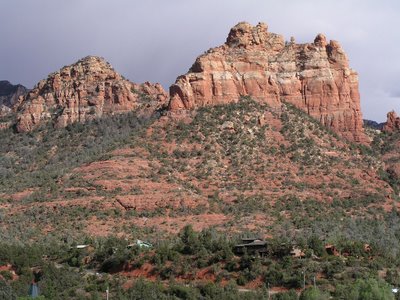
Having enjoyed the
4Voice series, I've been working my way through more Pete Namlook recordings. However, when I got to
New Organic Life, I almost quit the project altogether.
New Organic Life was released in February 2001 as an edition of 2000 copies by "Namlook XVI" (Pete took to numbering each solo release by adding the Roman numeral to his last name, not the title, so on his first solo release, 1993's
Astrogator, he was just "Namlook," but his second,
The Dutch Side of the Milky Way, was released under the name "Namlook II," and so on all the way up to
New Organic Life by "Namlook XVI," and beyond).
First of all, let me warn you that there's absolutely nothing organic sounding about
New Organic Life. I suppose that the title's intended to be ironic and that it's supposed to sound like some sort of futuristic airport with giant engines, power turbines, hovercrafts and hydraulic lifts moving about, but frankly it sounds more like you're inside of a giant vacuum cleaner that's operating underwater, like SpongeBob SquarePant's reversible leaf blower. And every track sounds the same.
Do you remember Paul Kanter's
Blows Against the Empire? Remember the third cut on the second side,
Home, which was a bunch of sound effects resembling the engine room of a starship? If so, you're starting to get close to the sound of
New Organic Life. But now imagine
Home played at 1/4 speed and coming from somewhere down the block. Now, imagine this going on for a full CD. Voila,
New Organic Life.
Namlook XVII followed up on this release in September 2001 with
New Organic Life II (only
2000 copies, again) and guess what? It sounds exactly the same! Just more
whoooosh, with no rhythm, melody or identifiable samples. Now, I'm not at all adverse to the avant garde, and can listen to some pretty outre music, but for the life of me I can't hear anything in
NOL II different enough from
NOL to justify another full-length CD. It really sounds like some generic product, 60 minutes of "stuff"; not music, not art.
So what does Namlook XVIII do in October 2002? Why, he releases
New Organic Life III! In this third installment, Namlook at least advances the sound a little bit, and adds some analogue noise over the cavernous, vacuum-cleaner sounds. By the time he gets to "
Russia's NOL in Space", the second-to-last cut, he even throws in something that comes close to being an actual melody! But any pleasure one can derive from this CD is just in contrast to having suffered through the first two - after two hours of swhooshy static, any change is welcome.
If you're looking to start a Namlook collection, I suggest that you avoid the
New Organic Life series. If the idea of avant electronica with an organic sound appeals to you, check out Future Sounds of London's
Lifeforms instead.
But as I was saying, these three CDs almost put me off of Namlook altogether. So imagine my surprise when, with a sigh, I dropped a copy of 1999's
Free Your Mind into the CD player. It turns out that this one is something of a fusion CD, full of vocals and distinct jazz, Latin and Afro influences. How could Namlook XV even be the same musician as the Namlook XVI through XVIII responsible for
New Organic Life? About the only thing that could have brought me back to the Namlook camp after three CDs of
NOL would have been some funky, spacy, occasionally quite sexy fusion with a world-beat rhythm, and that's what
Free Your Mind delivers. It's really too bad there's only 2000 copies of this floating around, as opposed to the 6,000 copies of
NOL I-III.
Inspired, I then jumped into 2004's
Music for Urban Meditation, Namlook XIX's first solo recording after the
NOL series. The music here is exactly what the title implies - ambient, but with a rough-around-the-edges, urban feel to it. Like the
NOL recordings, there's no real melody or rhythm, just the changing textures of the music, but unlike the
NOL recordings, the textures
do change. Good background music for a night alone in a big city, or for, well, urban meditation.
But if you really want your money's worth from a Namlook series, and you can't find
Free Your Mind, check out
Jet Chamber I through
V. I cringed at the name, anticipating the
Jet Chamber sound was going to be more of the
NOL aircraft-exhaust-from-hell sound, and was again surprised to hear Namlook actually jamming out with collaborator Atom Heart. I've expressed doubt before as to whether Namlook's collaborators are really other people, or if he's actually the only musician, but on these recordings, you can hear a true exchange and interplay between two creative minds.
"You know what I miss?" asks a vocal sample on
Jet Chamber V. "I miss green. Trees and grass and everything. I love green." It's almost as if, after the ironic artificiality of
New Organic Life, Namlook missed the truly organic, and wanted to sink his teeth into some grooves and just bounce ideas and exchange riffs with Atom Heart. These recordings can probably best be classified as drum and bass, but don't expect anything from Namlook to be typical of any genre. However, these are thoroughly enjoyable CDs, released between 1995 and 2000, in limited sets of only 1,000 to 2,000 each, so good luck finding them.
 All our corporate business having been concluded Saturday night, I gave myself Sunday to explore Arizona a little bit. I checked out of the Biltmore, rented a car and drove north out of Phoenix on Interstate 17.
All our corporate business having been concluded Saturday night, I gave myself Sunday to explore Arizona a little bit. I checked out of the Biltmore, rented a car and drove north out of Phoenix on Interstate 17.







 A Saucerful of Ambience - The second entry in the TDSOTM series came out in 1995 and opens with a long sequence of environmental/ambient bird and insect sounds and slowly builds into a sustained space groove. In this case, it sounds like Namlook created the "house," the environment for Schulze to then explore with his Moog, sort of like the Fripp and Eno collaborations of the 1970s.
A Saucerful of Ambience - The second entry in the TDSOTM series came out in 1995 and opens with a long sequence of environmental/ambient bird and insect sounds and slowly builds into a sustained space groove. In this case, it sounds like Namlook created the "house," the environment for Schulze to then explore with his Moog, sort of like the Fripp and Eno collaborations of the 1970s.







































